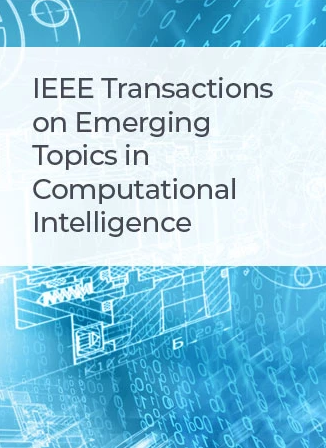用于单幅图像去噪的补偿大气散射模型和双分支网络
IF 5.3
3区 计算机科学
Q1 COMPUTER SCIENCE, ARTIFICIAL INTELLIGENCE
IEEE Transactions on Emerging Topics in Computational Intelligence
Pub Date : 2024-04-18
DOI:10.1109/TETCI.2024.3386838
引用次数: 0
摘要
现有的去噪网络大多依赖于合成的灰度-清晰度图像对进行训练,因此在真实世界场景中效果不佳。在本文中,我们为雾霾图像推导了一个重新制定的大气散射模型,并提出了一种新型轻量级双分支去雾霾网络。在该模型中,我们使用 "变换图"(Transformation Map)表示去雾变换,使用 "补偿图"(Compensation Map)表示可变光照补偿。基于这个模型,我们设计了一个双分支网络(TBN)来联合估计变换图和补偿图。我们的 TBN 设计有一个共享的特征提取模块和两个自适应权重模块。特征提取模块用于从雾霾图像中提取共享特征。两个自适应加权模块分别为变换图和补偿图生成两组自适应加权特征。这种设计可以有针对性地将特征转换到变换贴图和补偿贴图。为了进一步提高实际应用中的去毛刺性能,我们为 TBN 提出了一种半监督学习策略。具体来说,通过基于合成图像对进行有监督的预训练,我们提出了一种自我增强方法来生成伪标签,然后利用伪标签以半监督的方式进一步训练我们的 TBN。大量实验证明,基于模型的 TBN 在各种实际数据集上的表现优于最先进的方法。本文章由计算机程序翻译,如有差异,请以英文原文为准。
Compensation Atmospheric Scattering Model and Two-Branch Network for Single Image Dehazing
Most existing dehazing networks rely on synthetic hazy-clear image pairs for training, and thus fail to work well in real-world scenes. In this paper, we deduce a reformulated atmospheric scattering model for a hazy image and propose a novel lightweight two-branch dehazing network. In the model, we use a Transformation Map to represent the dehazing transformation and use a Compensation Map to represent variable illumination compensation. Based on this model, we design a
T
wo-
B
ranch
N
etwork (TBN) to jointly estimate the Transformation Map and Compensation Map. Our TBN is designed with a shared Feature Extraction Module and two Adaptive Weight Modules. The Feature Extraction Module is used to extract shared features from hazy images. The two Adaptive Weight Modules generate two groups of adaptive weighted features for the Transformation Map and Compensation Map, respectively. This design allows for a targeted conversion of features to the Transformation Map and Compensation Map. To further improve the dehazing performance in the real-world, we propose a semi-supervised learning strategy for TBN. Specifically, by performing supervised pre-training based on synthetic image pairs, we propose a Self-Enhancement method to generate pseudo-labels, and then further train our TBN with the pseudo-labels in a semi-supervised way. Extensive experiments demonstrate that the model-based TBN outperforms the state-of-the-art methods on various real-world datasets.
求助全文
通过发布文献求助,成功后即可免费获取论文全文。
去求助
来源期刊

IEEE Transactions on Emerging Topics in Computational Intelligence
Mathematics-Control and Optimization
CiteScore
10.30
自引率
7.50%
发文量
147
期刊介绍:
The IEEE Transactions on Emerging Topics in Computational Intelligence (TETCI) publishes original articles on emerging aspects of computational intelligence, including theory, applications, and surveys.
TETCI is an electronics only publication. TETCI publishes six issues per year.
Authors are encouraged to submit manuscripts in any emerging topic in computational intelligence, especially nature-inspired computing topics not covered by other IEEE Computational Intelligence Society journals. A few such illustrative examples are glial cell networks, computational neuroscience, Brain Computer Interface, ambient intelligence, non-fuzzy computing with words, artificial life, cultural learning, artificial endocrine networks, social reasoning, artificial hormone networks, computational intelligence for the IoT and Smart-X technologies.
 求助内容:
求助内容: 应助结果提醒方式:
应助结果提醒方式:


